Just inside the entrance of the Maria Bartuszova exhibition at Tate Modern hangs a single white drop suspended from the ceiling by a thin piece of string. The untitled sculpture (1963–64) is an example of the Slovakian artist’s early experiments; she would pour liquid plaster into an inflated balloon and then submerge it in water, allowing the weight of the material – its gravitational pull – to dictate the final form. She called this process ‘gravistimulated shaping’, and it was born in part out of the need to save time, as she juggled her work as an artist with her responsibilities as a mother. Balloons were what she had to hand; she also used condoms to the same effect. The smooth-surfaced, sagging form appears both weighty and fragile, sensual and melancholy. It evokes, to me, less a ‘dew drop’ – as the wall text suggests – than a breast.
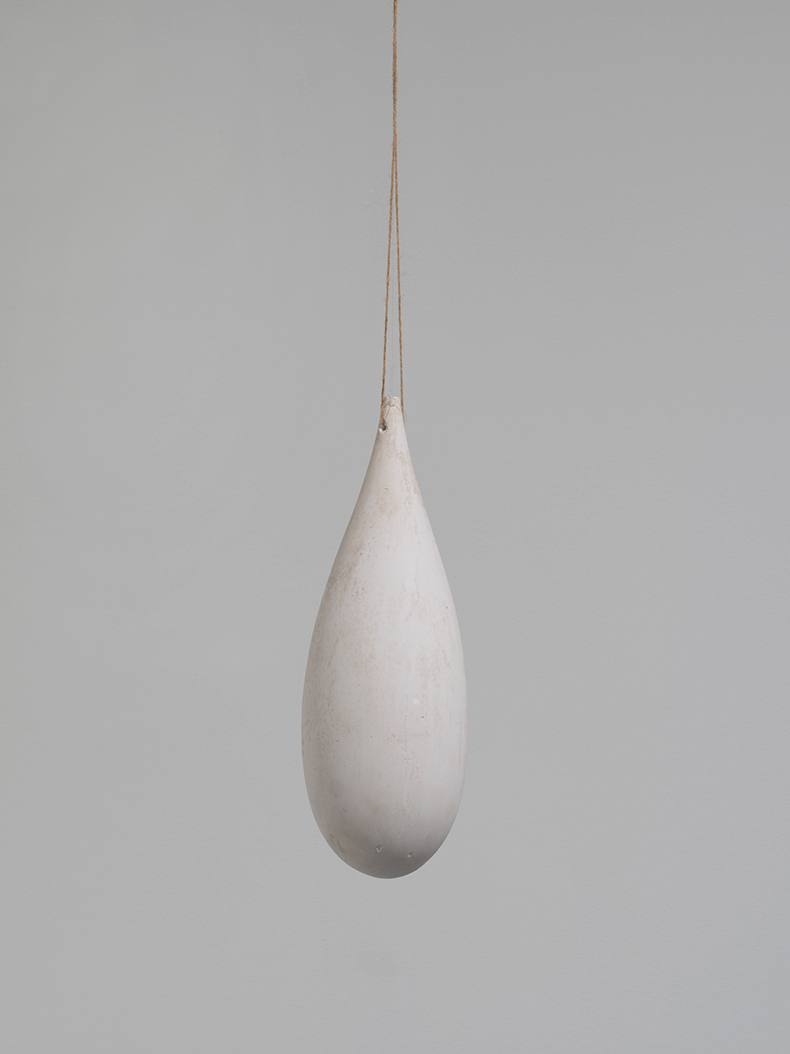
Untitled (Drop) (1963–64), Maria Bartuszova. Courtesy the estate of Maria Bartuszova, Kosice, and Alison Jacques Gallery, London
Yet for Bartuszova, the relationship between the body and the natural world, or between public and private realms, was fluid and evolving. Her small-scale sculptures seem to shift between the appearance of flesh – bulging internal organs, nipples, a flaccid penis – and organic material such as seeds, stones, cracked eggshells. ‘Angular, sharp, inorganic shapes give the impression of coldness; rounded, organic forms appear warm and, when touching, can create that feeling of a gentle caress – maybe even an erotic embrace,’ Bartuszova said in 1983.
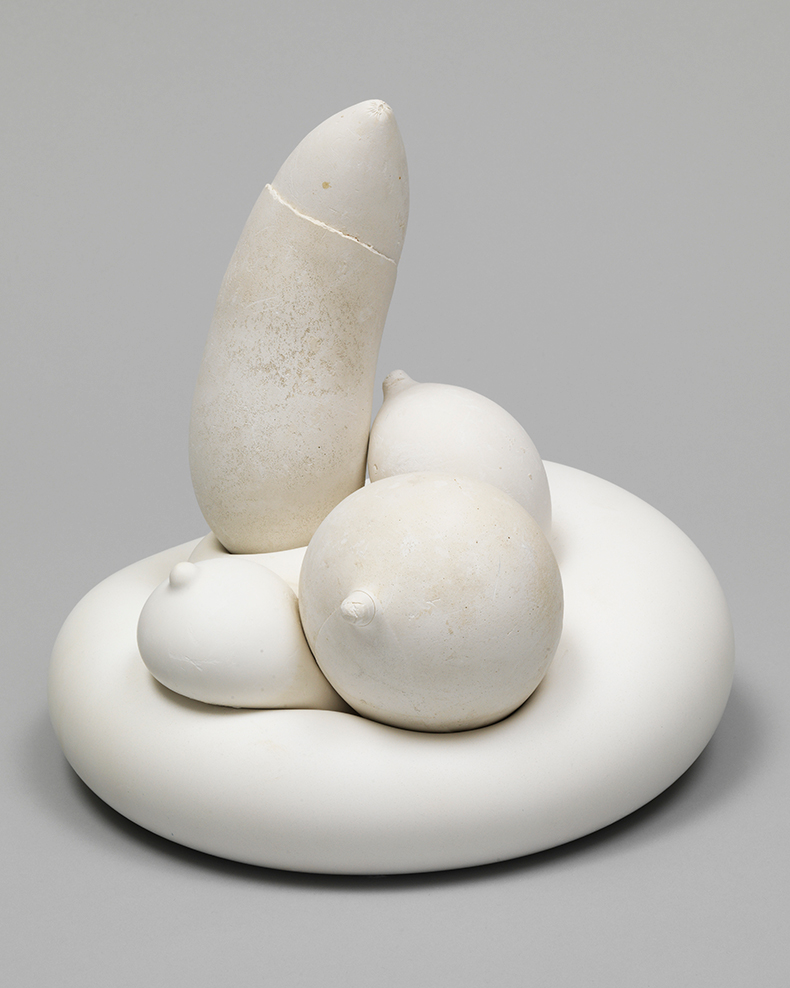
Untitled (1973), Maria Bartuszova. Tate collections. Photo: © the Archive of Maria Bartuszova, Kosice
By the early 1960s, she had already begun to explore the tactile and emotional possibilities of objects. Interested both in ludic and therapeutic applications of art, she created a series of multi-part sculptures that were designed to be explored through touch and assembled as puzzles. These were used in workshops for blind and partially sighted children. They are presented here alongside a series of archival photographs in which the participants lovingly clutch the rounded forms to their chests or cheeks as if they were soft toys or small animals.
Born in Prague in 1936, Bartuszova lived for most of her career in the Slovak city of Kosice where she produced a number of commissions for buildings and public sculptures funded by the Soviet state. This was an important source of income for the artist but also allowed her to experiment with her ideas on a larger scale, often in quietly radical ways. Her ideas for a children’s climbing frame and slide – not realised in her lifetime, though the models are on display at the Tate – imagine bones, ovaries and organs as a site for exploration and communal activity.
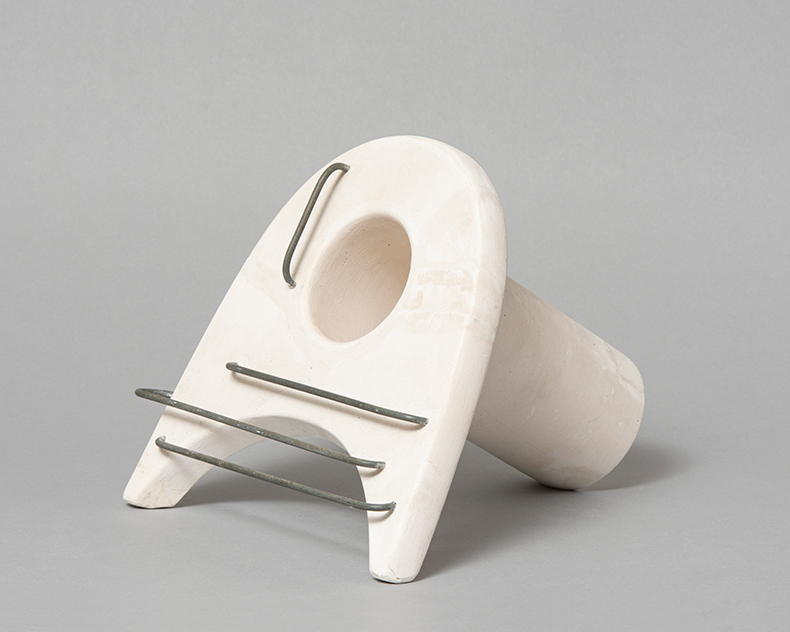
Model Children’s Climbing Frame (1964–65), Maria Bartuszova. Courtesy the estate of Maria Bartuszova, Kosice, and Alison Jacques, London
While Bartuszova was never publicly part of any dissident movement, which may be one of the reasons she is relatively little known in the West, her work nonetheless subverted state-sanctioned notions of art by celebrating the chaotic and unknown. A collection of bound forms from the 1980s on display here may reflect on the personal constraints she felt in terms of expression as an artist during this period of the Cold War. But on the whole, her work is too intimate and bodily to be overtly political – she seems to have been more interested in capturing the variousness of life than social critique. There are doughy mounds of white plaster tied with string like anaemic, trussed-up bodies. Another installation comprises fist-sized, bulging balls of plaster suspended by a web of interconnecting threads.
In 1986, Bartuszova created a large-scale relief by pouring prepared plaster over a rubber sheet. The white rectangular surface is smooth and convex with a rough slit or tear at its centre through which it is possible to see, depending on where you’re standing, the wall and shadow, tendrils of string and the thick, uneven bulge of plaster on the inside. Of all the works in the exhibition, this is the one that seems to refer to the history of plaster as a construction material most directly. But there are also connotations of a mattress with the rounded imprint of an absent body, or wounded flesh. It is a work both seductive and brutal.
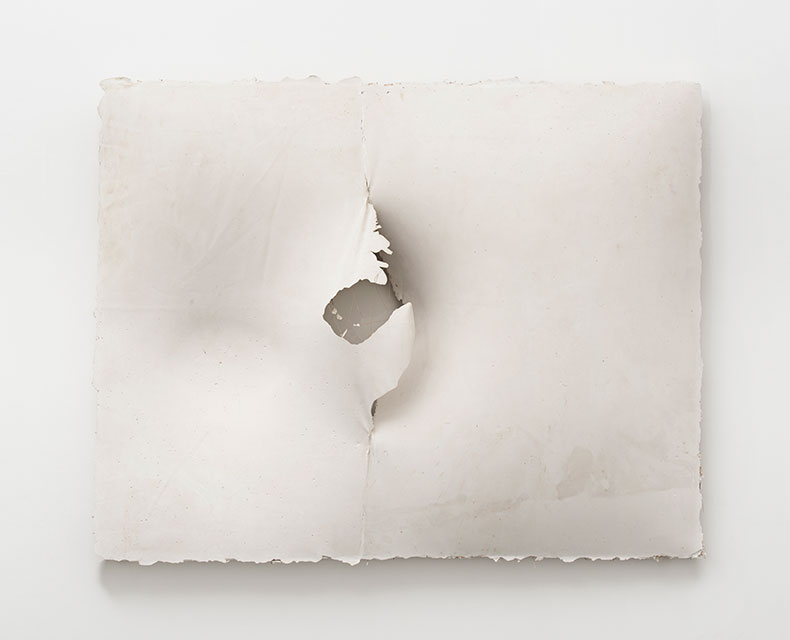
Untitled (1986), Maria Bartuszova. Courtesy the estate of Maria Bartuszova, Kosice, and Alison Jacques, London
Bartuszova didn’t work exclusively with plaster and there are a few aluminium and brass sculptures included in the exhibition, but they lack the unpredictability, immediacy and messiness that makes the plaster works so compelling. Her fragile forms are radical in their misshapenness – for the ways in which they hold the press of the artist’s flesh and assert their own strange, shapeshifting physicality.
‘Maria Bartuszová’ is at Tate Modern, London, until 25 June 2023.
Unlimited access from just $16 every 3 months
Subscribe to get unlimited and exclusive access to the top art stories, interviews and exhibition reviews.


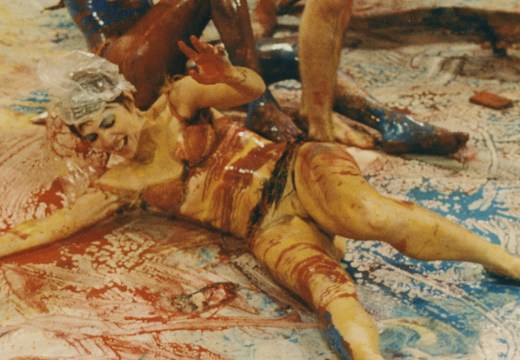
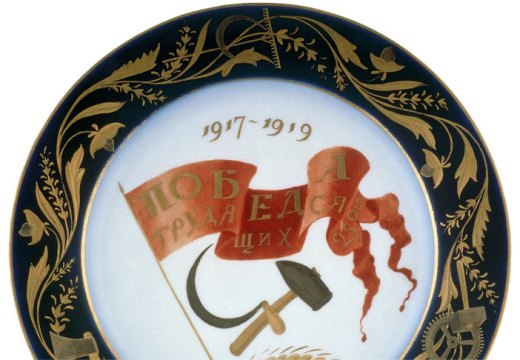










![Masterpiece [Re]discovery 2022. Photo: Ben Fisher Photography, courtesy of Masterpiece London](http://www.apollo-magazine.com/wp-content/uploads/2022/07/MPL2022_4263.jpg)
It’s time for the government of London to return to its rightful home